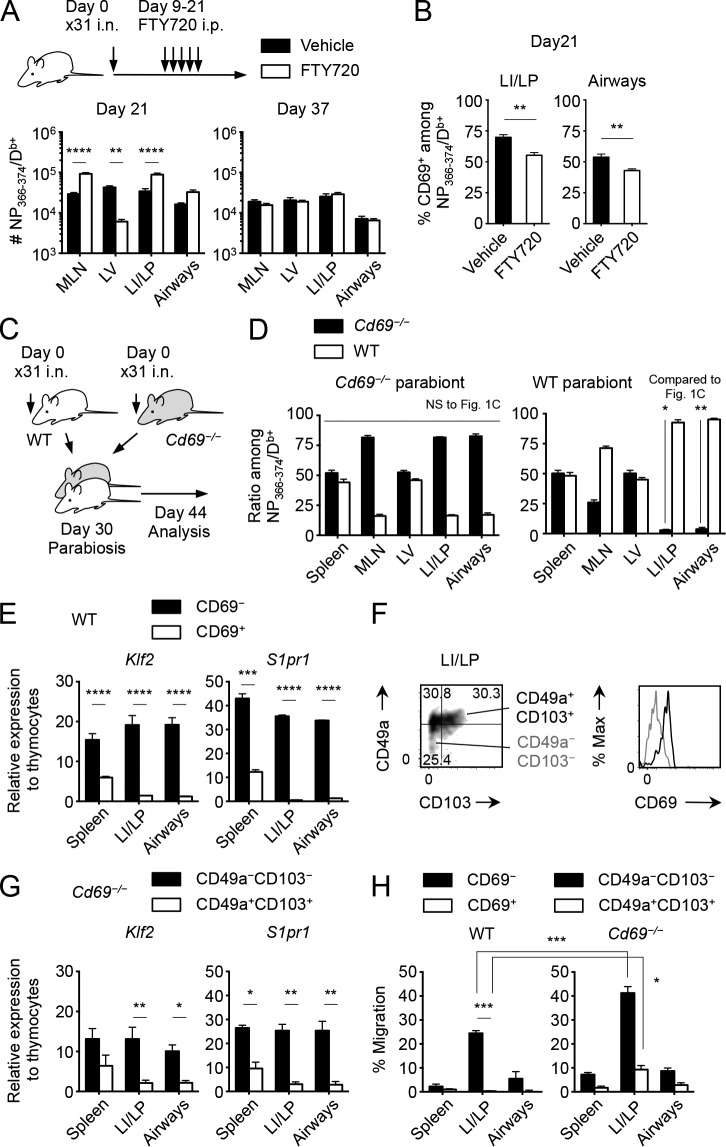Figure 3.
Differential roles of CD69 in the retention of circulatory and resident memory CD8+ T cells in the lung. (A and B) Mice were infected i.n. with x31 and were treated for 13 consecutive days with FTY720 or the vehicle alone from day 9. (A) Numbers of NP-specific CD8+ T cells in each tissue at the indicated time points. (B) Ratios of CD69+ cells among NP-specific CD8+ T cells in each tissue at day 21 PI. (C and D) WT and Cd69−/− mice were infected i.n. with x31 and were parabiotically joined 30 d later. Mice were analyzed at day 14 after the surgery. (D) WT/Cd69−/− ratios among NP-specific CD8+ T cells in each tissue of Cd69−/− (left) and WT (right) parabionts. (E) Expression of the indicated genes in sorted CD69+ or CD69− CD44hiCD8+ T cells in each tissue of WT mice at day 30 PI. (F) Expressions of CD49a and CD103 by NP-specific CD8+ T cells and those of CD69 by the indicated populations in the LI/LP of WT mice. (G) Expression of the indicated genes in sorted CD49a+CD103+ or CD49a−CD103− CD44hiCD8+ T cells in each tissue of Cd69−/− mice at day 30 PI. (H) S1P-specific chemotaxis of activated and nonactivated NP-specific CD8+ T cells isolated from each tissue of WT or Cd69−/− mice at day 30 PI. Data are representative of two independent experiments (mean and SEM of three to six mice per group or three pairs of mice for parabiosis). *, P < 0.05; **, P < 0.01; ***, P < 0.001; ****, P < 0.0001 by two-way repeated measures ANOVA with Sidak’s posthoc tests (A, E, and G), Student’s t test in comparison with each counterpart in the Fig. 1 C (D), and two-way ANOVA with Bonferroni’s posthoc tests (H).

